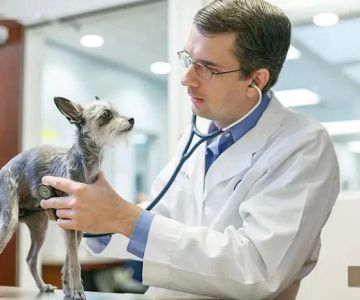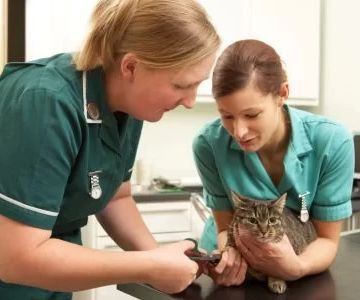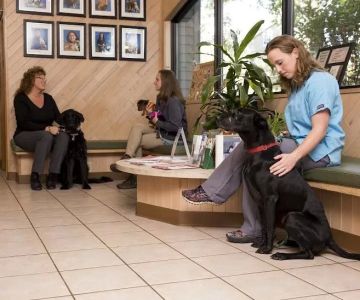- 1-Overview-of-Veterinarian-Training
- 2-Educational-Path-to-Becoming-a-Vet
- 3-Veterinary-School-Experience-and-Internships
- 4-Licensing-and-Certification-Requirements
- 5-Skills-and-Professional-Development
- 6-Real-Life-Example-and-Career-Insights
- 7-Taking-the-Next-Step-Toward-a-Veterinary-Career
1. Overview of What Training Is Needed to Become a Veterinarian
Understanding what training is needed to become a veterinarian is the first crucial step for anyone passionate about animal health and welfare. Becoming a vet is a demanding journey that combines rigorous academic study, hands-on clinical experience, and professional licensing. This training ensures vets are fully equipped to diagnose, treat, and care for a wide range of animals, from pets to livestock.
The path is challenging but rewarding, requiring dedication and a love for science and animals. Knowing what to expect helps prospective vets prepare mentally and academically for the journey ahead.
1.1 Why Training Matters in Veterinary Medicine
Veterinary medicine is complex, covering biology, pharmacology, surgery, and ethics. Proper training guarantees vets can provide the best care and adapt to evolving medical knowledge and technologies.

9300 Monroe Rd, Charlotte, NC 28270, USA
See Details2. Educational Path to Becoming a Vet
The typical educational route begins with a bachelor's degree, often focusing on pre-veterinary studies or related sciences such as biology, chemistry, or animal science. This foundational education is essential to meet veterinary school prerequisites.
Following undergraduate studies, aspiring veterinarians must attend an accredited veterinary school to earn a Doctor of Veterinary Medicine (DVM) degree, which usually takes four years. Veterinary school is intensive, covering both theoretical knowledge and practical skills necessary for animal care.
2.1 Coursework and Academic Rigor
Courses typically include anatomy, physiology, pathology, microbiology, pharmacology, and clinical medicine. The curriculum is designed to build a strong scientific base alongside hands-on labs and animal handling.
3. Veterinary School Experience and Internships
Beyond classroom learning, veterinary students participate in clinical rotations and internships where they gain invaluable real-world experience. These placements occur in veterinary hospitals, research labs, or farms, allowing students to work directly with animals under professional supervision.
Internships are vital for refining diagnostic and surgical skills and understanding the business and ethical aspects of veterinary practice.
3.1 The Importance of Mentorship and Networking
Many successful vets credit internships and mentorships for helping them navigate challenges and build confidence. These experiences also open doors to future job opportunities and specialized training.
4. Licensing and Certification Requirements
After completing veterinary school, graduates must pass the North American Veterinary Licensing Examination (NAVLE) or equivalent state exams to legally practice. Some states may have additional requirements, such as jurisprudence exams or continuing education credits.
Specialization in areas like surgery, dermatology, or internal medicine often requires further residency training and board certification.
5. Skills and Professional Development
Besides formal education, vets develop essential skills including critical thinking, communication, and empathy. Effective communication with pet owners and colleagues ensures better patient outcomes.
Continuous learning is a key part of a veterinarian’s career, as medical advancements and animal health challenges evolve rapidly.
6. Real-Life Example and Career Insights
Consider Dr. Sarah Thompson, who pursued her dream of becoming a veterinarian after volunteering at an animal shelter during college. Her experience inspired her to enroll in a rigorous pre-vet program, followed by veterinary school and several internships specializing in exotic animals. Today, Dr. Thompson shares how the demanding training paid off, allowing her to provide expert care and contribute to wildlife conservation efforts.
Her story illustrates that while what training is needed to become a veterinarian might seem daunting, passion and persistence lead to fulfilling success.
7. Taking the Next Step Toward a Veterinary Career
If you’re inspired by learning what training is needed to become a veterinarian and ready to embark on this rewarding journey, consider exploring educational programs and internships early. Preparing thoroughly will help you meet the challenges ahead with confidence.
For those looking to invest in the right tools and resources to support your studies or career growth, we recommend visiting our trusted partner site, which offers top-quality veterinary textbooks, training materials, and equipment designed for aspiring and practicing veterinarians.
Start your path today with the knowledge and resources that will help you succeed in veterinary medicine!










